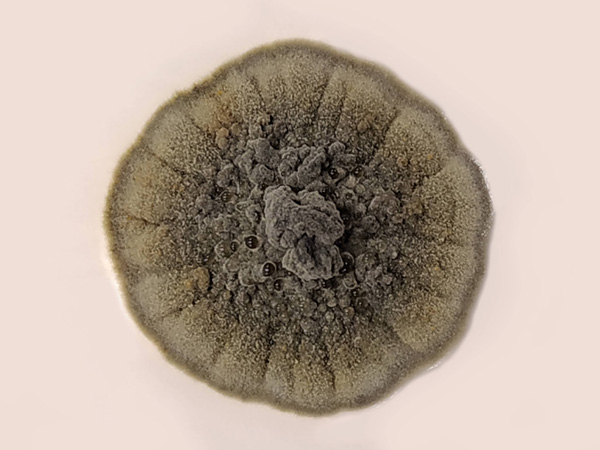Salinomyces polonicus – A new species of fungus discovered in brine
Scientists from the PAS Institute of Botany isolated a new genus and species of fungus – Salinomyces and Salinomyces polonicus – from brine graduation tower in Dębowiec near Cieszyn. The new moderately halophilic fungus has been described in an article published in Fungal Biology.

Culture of Salinomyces polonicus on MEA medium. Photo by P. Czachura.
Extreme habitats are habitats with extremely unfavorable living conditions. As such, they are usually inhabited by a narrow group of highly specialized microorganisms. Extreme habitats include, among others, habitats with high salt (NaCl) concentrations. Many of these habitats are artificially created through the extensive use of salt by humans. Their biodiversity is very poorly understood. This is especially true of halophilic fungi, the research on which began only at the beginning of the XXI century.
A significant contribution to the knowledge about the diversity of fungi inhabiting saline anthropogenic habitats has recently been made by scientists from the PAS Institute of Botany – Paweł Czachura, Dr. Magdalena Owczarek-Kościelniak and Dr. Marcin Piątek.
One of the most interesting fungi isolated from brine is a new-to-science genus and species Salinomyces polonicus. It is moderately halophilic (it grows best at low NaCl concentrations – about 5%), but closely related to the most halotolerant fungus in the world, Hortaea werneckii, which is able to grow at almost the maximum possible salt concentration in water (i.e., 30%; the maximum concentration is 33%).
Read the article „Salinomyces polonicus: A moderately halophilic kin of the most extremely halotolerant fungus Hortaea werneckii” in Fungal Biology.
Source of information: PAS Institute of Botany
